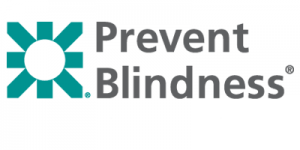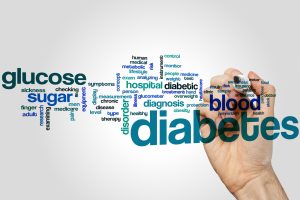 It’s about that time of year. Cold and flu season is greatly approaching. Although some employees may have paid sick leave, they may be afraid to use it for risk of ruining their reputation. On the other hand, maybe there is no one to cover their shift. Employees do not have a choice in workplaces where there is no paid sick leave. If these employees stayed home, they would risk losing pay, or in some cases, their job. A recent study has shown that workplaces without paid sick leave are at risk for harming the health of their employees.
It’s about that time of year. Cold and flu season is greatly approaching. Although some employees may have paid sick leave, they may be afraid to use it for risk of ruining their reputation. On the other hand, maybe there is no one to cover their shift. Employees do not have a choice in workplaces where there is no paid sick leave. If these employees stayed home, they would risk losing pay, or in some cases, their job. A recent study has shown that workplaces without paid sick leave are at risk for harming the health of their employees.
Paid Sick Leave and Health Statistics
A 2013 report by the National Partnership for Women and Families looked at the effect of paid sick leave on health outcomes. They found that four of ten private sector workers and eight of ten low-income workers do not have access to paid sick leave. Also, these workers were 1.5 times more likely to go to work with the flu or a viral infection. In the fall of 2009, nearly eight million workers went to work with H1N1. In turn, these people are thought to have infected seven million of their co-workers. This string of events was likely the cause of the peak of the pandemic.
Furthermore, parents who do not have paid sick leave are more likely to send their sick kids to school or daycare. This is because the parents have no other form of childcare and cannot afford to stay home unpaid. This situation puts care givers, teachers, and classmates of the child at risk. Therefore, paid sick leave is important for the health of not only the worker, but many others as well.
Recent Research
A study of nearly 18000 workers between the ages of 18 and 64 years of age looked at the effects of paid sick leave on overall health. Those without paid sick leave were more likely to have mental distress than those who did. In fact, those without sick leave had nearly 150-percent more mental distress. This distress can disrupt the daily life and activities of those with no paid leave. Young, Hispanic, low-income, and poorly educated groups were at greatest risk. These results suggest that lack of paid sick leave is a social justice and health disparity issue.
Protect Yourself Against Cold and Flu Season
Access to paid sick leave may not be under your control. However, you can take steps to prevent sickness.
- Eat a balanced diet with plenty of immune-friendly fruits and vegetables.
- Stay active each day since exercising can boost heart health, keep weight at a healthy level, and in turn protect overall health.
- Practice good hygiene by washing your hands regularly, especially if you have contact with others in your daily life. Caregivers, healthcare workers, and teachers are just some examples of workers who may be at most risk for exposure to germs. Therefore, these workers will need to be even more diligent about washing hands often and perhaps keeping sanitizer close at hand.
- Take immune-friendly supplements such as Biovia30 by Vita Sciences. Biovia30 is full of 30 million colony-producing units of probiotic strains to promote health digestive and immune health.
-written by Staci Gulbin, MS, MEd, RD, LDN
Sources:
Harvard Health Publishing (September 2014) “How to Boost Your Immune System”
National Partnership for Women and Families (April 2013) “Paid Sick Days Improve Our Public Health”
Preidt, R. (September 22, 2017) “Workers Without Paid Sick Leave Suffer Ill Effects”
 Nothing says “Good Morning” like a hot cup of coffee. Coffee can be healthy as a part of your morning routine or a pick-me-up on your way to work. Moderate coffee intake has been shown to improve cognitive health and depression. Also, a 2014 study showed that those who drank three to five cups of coffee daily had lower heart disease risk. Furthermore, a recent study has shown women who drink coffee to have lower diabetes risk.
Nothing says “Good Morning” like a hot cup of coffee. Coffee can be healthy as a part of your morning routine or a pick-me-up on your way to work. Moderate coffee intake has been shown to improve cognitive health and depression. Also, a 2014 study showed that those who drank three to five cups of coffee daily had lower heart disease risk. Furthermore, a recent study has shown women who drink coffee to have lower diabetes risk. When you hear about brain health, you may think of lowering stress and anxiety. However, having a healthy brain also involves reducing risk of stroke as well as memory conditions like Alzheimer’s and dementia. A recent report has found that keeping your body healthy is vital to keeping your brain healthy.
When you hear about brain health, you may think of lowering stress and anxiety. However, having a healthy brain also involves reducing risk of stroke as well as memory conditions like Alzheimer’s and dementia. A recent report has found that keeping your body healthy is vital to keeping your brain healthy. When you take a medicine over the counter, you likely focus mostly on the benefits it can provide you. However, it’s possible to experience some harmful health effects from use of over-the-counter medicines. A recent study has found that some common painkillers used by those with arthritis may cause high blood pressure.
When you take a medicine over the counter, you likely focus mostly on the benefits it can provide you. However, it’s possible to experience some harmful health effects from use of over-the-counter medicines. A recent study has found that some common painkillers used by those with arthritis may cause high blood pressure. are? If you are a young adult, it is very likely that these questions have not been at the forefront of your mind when it comes to your health. A recent study showed that in 2013-2014, only half of the 6.7 million young adults from 18 to 39 years old were treated for high blood pressure. Meanwhile, only 40-percent got their blood pressure under control. However, blood pressure control is not only important for heart health, but for brain health as well. Recent studies have linked normal blood pressure levels with improved cognition in older adults.
are? If you are a young adult, it is very likely that these questions have not been at the forefront of your mind when it comes to your health. A recent study showed that in 2013-2014, only half of the 6.7 million young adults from 18 to 39 years old were treated for high blood pressure. Meanwhile, only 40-percent got their blood pressure under control. However, blood pressure control is not only important for heart health, but for brain health as well. Recent studies have linked normal blood pressure levels with improved cognition in older adults. Do you skip breakfast? Does your busy schedule make it hard to eat in the morning? Are you just not hungry in the early hours of the day? You may have heard that breakfast is the most important meal of the day. Recent research has found that this may be true. Skipping your morning meal can deprive your body of many important nutrients vital to overall health.
Do you skip breakfast? Does your busy schedule make it hard to eat in the morning? Are you just not hungry in the early hours of the day? You may have heard that breakfast is the most important meal of the day. Recent research has found that this may be true. Skipping your morning meal can deprive your body of many important nutrients vital to overall health. this spectacular event. However, just as important as where you will be viewing the eclipse is HOW you will be viewing it. It is important to have the proper eye gear and eye health awareness to prevent the eclipse eye injury.
this spectacular event. However, just as important as where you will be viewing the eclipse is HOW you will be viewing it. It is important to have the proper eye gear and eye health awareness to prevent the eclipse eye injury. for more information on how you can protect your eyes.
for more information on how you can protect your eyes. predictions from coming true.
predictions from coming true. difficult. A recent study has found that low estrogen levels in some women may be linked to depression.
difficult. A recent study has found that low estrogen levels in some women may be linked to depression. with depression learn more about the condition. Also, this foundation helps support research efforts to find better treatments for those with depression.
with depression learn more about the condition. Also, this foundation helps support research efforts to find better treatments for those with depression. recent report by the Centers for Disease Control and Prevention (CDC) says that over 100 million people in the United States have diabetes or prediabetes.
recent report by the Centers for Disease Control and Prevention (CDC) says that over 100 million people in the United States have diabetes or prediabetes.